6172RB Science a STEM approach Year 2 low res watermark
You also want an ePaper? Increase the reach of your titles
YUMPU automatically turns print PDFs into web optimized ePapers that Google loves.
Biological sciences<br />
GROWING AND CHANGING<br />
<strong>STEM</strong> project<br />
<strong>STEM</strong> project overview<br />
Life cycle map<br />
Design and create a mat for a Bee-Bot activity, using images/text depicting the growth of a<br />
living thing. Students then program a Bee-Bot to move along the correct pathway.<br />
(If your school does not have access to Bee-Bots, students act as a ‘Bee-Bot’ and move around<br />
the mat as directed by a fel<strong>low</strong> student.)<br />
Concepts overview:<br />
<strong>Science</strong><br />
• Apply knowledge of living things and their predictable characteristics as they grow and<br />
change.<br />
• Conduct an investigation of a chosen living thing to explore how it looks as it grows and<br />
changes.<br />
• Use drawings to show life stages of a living thing.<br />
• Communicate findings in the form of a grid mat and give instructions to guide a Bee-Bot to the<br />
correct grid squa<strong>res</strong>.<br />
Technology/Engineering<br />
• Plan a mat design collaboratively.<br />
• Create drawings and a Bee-Bot mat.<br />
• Evaluate the mat and check the life stages drawn are correct, and refine if necessary.<br />
• Program a Bee-Bot with simple step-by-step coding.<br />
Mathematics<br />
• Use ruler lengths to informally measure distances to create a grid.<br />
• Use arrays to describe the arrangement of a grid as 4 x 4, which equals a total of 16 squa<strong>res</strong>.<br />
• Use fractions to determine sixteenths by folding paper or vinyl sheets.<br />
• Create a specific pathway along a grid using quarter and half turns.<br />
• Give and receive directions in order to fol<strong>low</strong> a pathway on a grid map.<br />
Alternative project ideas:<br />
© R.I.C. Publications<br />
Low <strong>res</strong>olution display copy<br />
• Students recreate the growth of a plant or animal out of Lego using a time-lapse movie and<br />
verbally explain how it changes.<br />
• Students create a digital book about themselves and how they have grown and changed using<br />
.<br />
• Create a habitat for an animal that caters for each of its stages in life as it grows and changes.<br />
R.I.C. Publications® – www.ricpublications.com.au 978-1-925431-95-7 YEAR<br />
<strong>Science</strong>:<br />
A <strong>STEM</strong> APPROACH<br />
29<br />
2


















